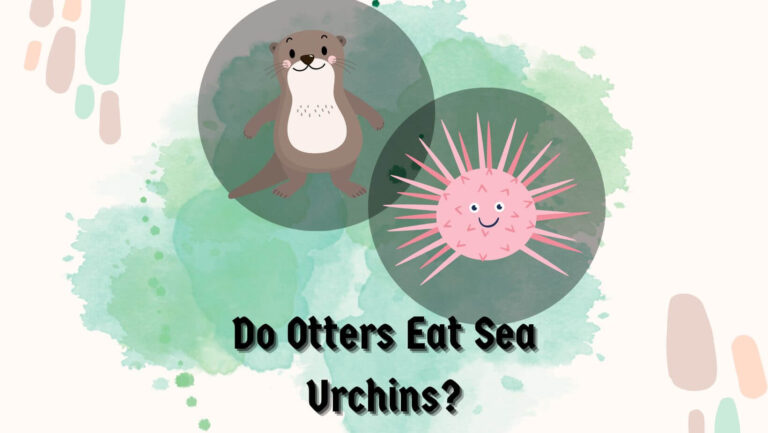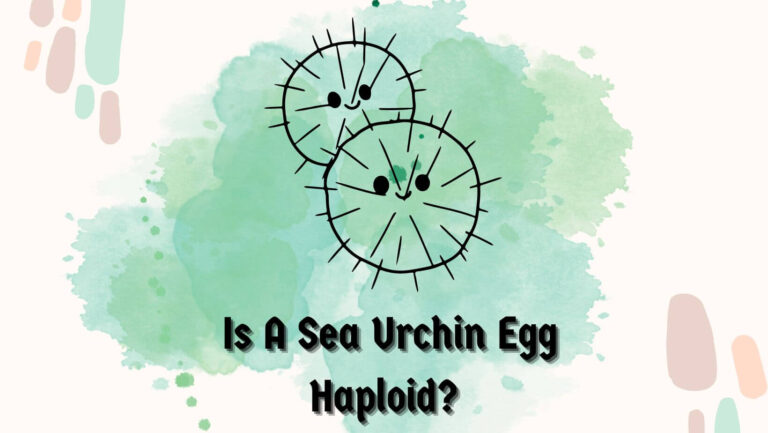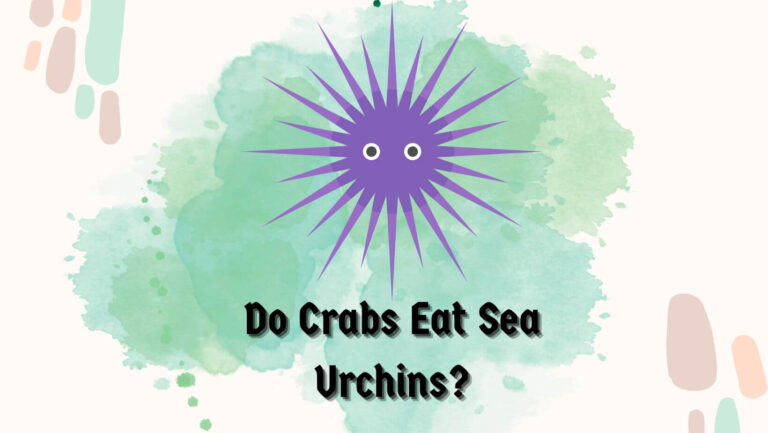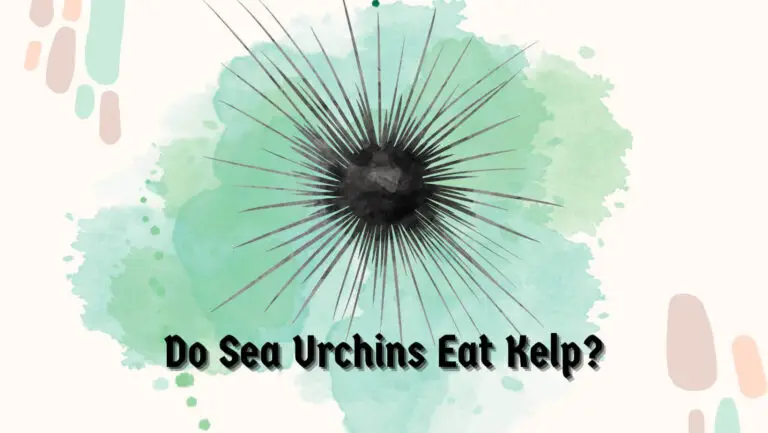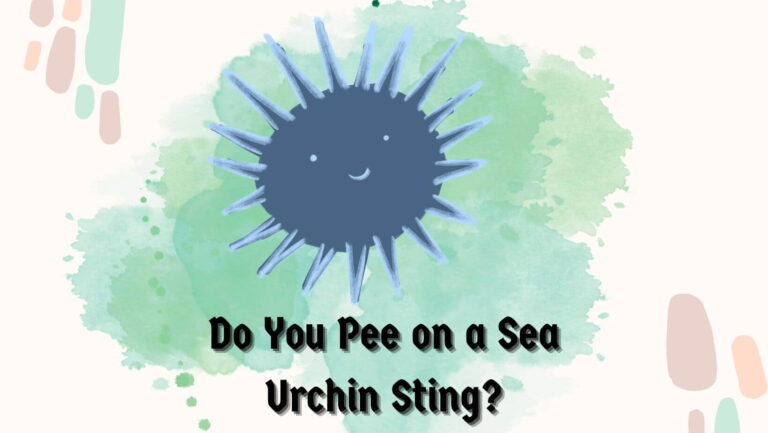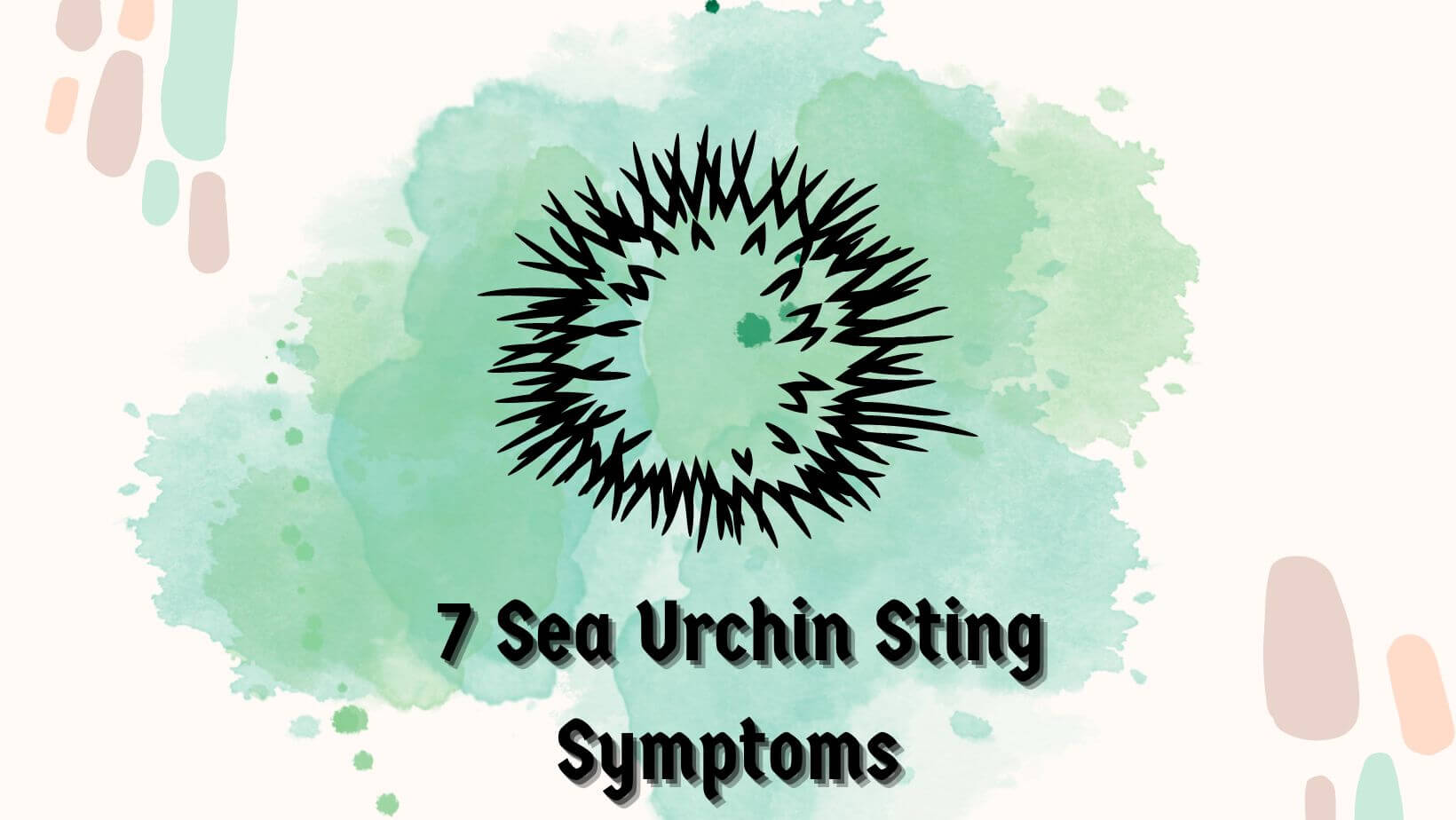
No doubt that Sea urchin stings can be painful & cause discomfort. However, with proper understanding, treatment, and prevention, the sea urchin sting symptoms can be managed effectively.
In this article, I will list seven common symptoms you will likely experience after getting sea urchin stings, along with practical tips & remedies that can help you alleviate them. There are many types of sea urchin sting symptoms that you may experience, ranging from sharp pain to skin discoloration.
Hence, we will delve into each symptom and discuss their causes, treatments, & preventive measures. So, if you have got a sting from a sea urchin, here are the following symptoms you are likely to experience.
Table of Contents
7 Sea Urchin Sting Symptoms

Symptom 1: Sharp Pain
Sharp pain is one of the primary symptoms you will experience after a sea urchin sting. You should know that these spiny creatures are known to deliver painful stings. Even some sea urchins can be venomous and pierce through your skin, causing infection.
However, coming back to the pain, the intensity of the pain can vary depending on various factors like the species of sea urchin & the depth of the sting. If you have just got a staying from a sea urchin, you must take a few immediate actions to alleviate the discomfort.
I will first recommend you soak the affected area in hot water. Trust me or not, hot water is very effective in providing quick relief by denaturing the venom & reducing pain. Also, you should consider taking Over-the-counter pain relievers (if required).
Some popular over-the-counter pain relievers that help alleviate the sharp pain caused by sea urchin stings are acetaminophen or ibuprofen. You can also consider applying topical numbing creams, like lidocaine, which can temporarily numb the area and provide soothing relief.
Symptom 2: Redness & Swelling
Another common symptom you are likely to experience after getting a sting from a sea urchin is redness & swelling around the affected area. You should know that some sea urchin species can be venomous, and their spine toxins can cause inflammatory responses in our skin, resulting in these kinds of visible signs.
However, the duration and the severity of swelling & redness will vary from person to person depending upon various factors. You will likely experience these symptoms within a few hours if you have a compromised immune system.
However, in most cases, symptoms subside within a few hours or days. If you are looking for ways to reduce redness & swelling, I will recommend you apply cold compresses to the affected area.
You should know that cold temperature is very helpful in constricting the blood vessels while reducing information. I will also advise you to raise your arm or leg, meaning elevating the affected area, which will further assist in reducing swelling.
Also, make sure that you consider over-the-counter antihistamines like diphenhydramine, which can help you alleviate this kind of symptom by blocking the histamine release responsible for the allergic reaction.
Symptom 3: Itching & Irritation
I hope you already know Itching and irritation are commonly experienced after a sea urchin sting, making it another significant symptom to address. As I told you earlier, some people can have compromised immune systems.
Their allergic reaction can easily be triggered by the venoms & spines of sea urchins leading to persistent Itching and irritation. In most cases, you will likely feel itching in areas where the spines have penetrated your skin.
If you want to relieve Itching & irritation, I will advise you to apply calamine lotion, which is known to have soothing properties and helps reduce Itching. Another option you can use is hydrocortisone cream, which acts as an anti-inflammatory agent, effectively reducing itchiness. Adding to that, you need to resist the urge to scratch the affected area, as this can potentially worsen the symptoms & wounds while increasing the risk of infection.
Symptom 4: Skin Discoloration
Another possible symptom that you may experience is skin discoloration after getting a sting from sea urchins. You should know that the venom & the immune response triggered by the sting can also lead to changes in our skin coloration.
Many types of skin dissolution may occur after getting a sting from a sea urchin. Depending on the type of sea urchin species and the bacteria or toxin present in the spine, skin discoloration can include redness, purple or blue hues, or even darkening or lightening of the affected area.
You should also note that the significance of the discoloration will also depend upon each individual and the severity of the sting. If you want to minimize skin dissolution, I will advise you to apply Aloe Vera gel to the affected area.
Aloe Vera gel is not only beneficial but also soothing & can promote the skin healing process. Another option is using Vitamin E oil, which has antioxidant properties and can reduce skin discoloration. However, make sure you are avoiding walking in direct sunlight or avoiding sun exposure to the affected area, as it can exacerbate discoloration and delay the healing process.
Symptom 5: Numbness or Tingling Sensation
Another symptom that people have frequently complained about is numbness or tingling sensation after getting a sea urchin sting. This sensation is due to the injection of nasty substances in sea urchins’ spines.
You should know that venom can contain neurotoxins that are known to affect nerve endings, leading to localized numbness and tingling. If you experience such symptoms, it is best to consult the nearest Health Care.
Several factors may influence sea urchin sting symptoms, like the depth of the sting and individual sensitivity to the venom. The species of sea urchins involved can also play a huge role in the occurrence of numbness & tingling sensation.
For example, if you have a sting from a flower urchin, it will cause more severe numbness than other species. Many medical treatments are very helpful in elevating persistent numbness or tingling sensation.
You can take help from prescription pain medications that may manage the discomfort & reduce inflammation. I will also advise you to go with physical therapy exercises that help improve blood circulation and promote healing. After getting a sting from species like flower urchins, you must consult a healthcare professional for a proper diagnosis and personalized treatment plan.
Symptom 6: Fever & Chills
Yes, fever can also manifest as symptoms following a sea urchin sting. Chills can also occur, which indicate an inflammatory response in your body. In some cases, these symptoms can also be accompanied by other signs of infections & complications.
You must seek prompt attention & appropriate care to prevent any further complications. If you experience fever or chill afterurchin’sa urchins sting, I will recommend you take self-care measures to manage the symptoms first.
It is best to stay hydrated and rest to aid the body’s natural healing process. Consider taking over-the-counter fever reducers like acetaminophen or ibuprofen, which can help alleviate discomfort. If symptoms worsen or persist, get medical attention immediately to ensure appropriate treatment.
You May Also Like Reading
Symptom 7: Difficulty Breathing or Chest Pain
Even though most sea urchin stings result in localized symptoms, like pain and swelling, you may also experience difficulty breathing or chest pain in severe cases. Usually, These symptoms indicate an allergic reaction or a systemic response, which often requires urgent medical attention.
If you have difficulty breathing or feel pain after getting a sta ing from a sea urchin, you must immediately act. You should call the emergency services immediately without further delay and can access an epinephrine auto-injector and administer it as directed while awaiting medical professionals.
Following this, it is very crucial for you to also seek follow-up medical care for a comprehensive evaluation & appropriate treatment.
Prevention Tips
You should know that prevention is always the best key to sea urchin stings. Therefore, you must understand the sea urchins’ habitat & behavior to reduce the risk of encounters. In general, sea urchins are abundant in rocky coastal areas, so wear protective gear like wetsuits, gloves & water boots when swimming or diving in these regions.
Also, create a barrier between your skin and the sea urchin, minimizing the risk of stings. If you encounter sea urchins, I will advise you to use safe removal and disposal techniques. You must also exercise caution and avoid direct contact with their spines, as those can be venomous and irritate your skin.
You must use tweezers or similar tools if the spines have already been embedded into your skin and dispose of them properly. Proper education about sea urchin stings and prevention measures can always help raise awareness among individuals who like swimming on rocky shores, which will reduce the overall incidence of stings.
Conclusion
You will undoubtedly experience various symptoms after getting a sea urchin sting, including numbness or tingling sensation, fever & chills, and even difficulty in breathing or chest pain in severe cases.
You must seek prompt medical attention & proper treatment. Also, employing self-care measures vital in effectively managing these symptoms. Prevention is always key, and you should understand their habitat, wear protective gear and employ safe removal techniques to reduce the risk of sea urchins sting symptoms.
I hope I have given you all the information to keep you informed and take the necessary precautions for a safe & enjoyable experience in coastal water. If you find this article, consider sharing it.
Your share will help many people learn about the major sea urchin sting symptoms and what they should do about them. Do check our other helpful guide on sea urchin sting and its management. See you in the next post, till then, take care & goodbye.

